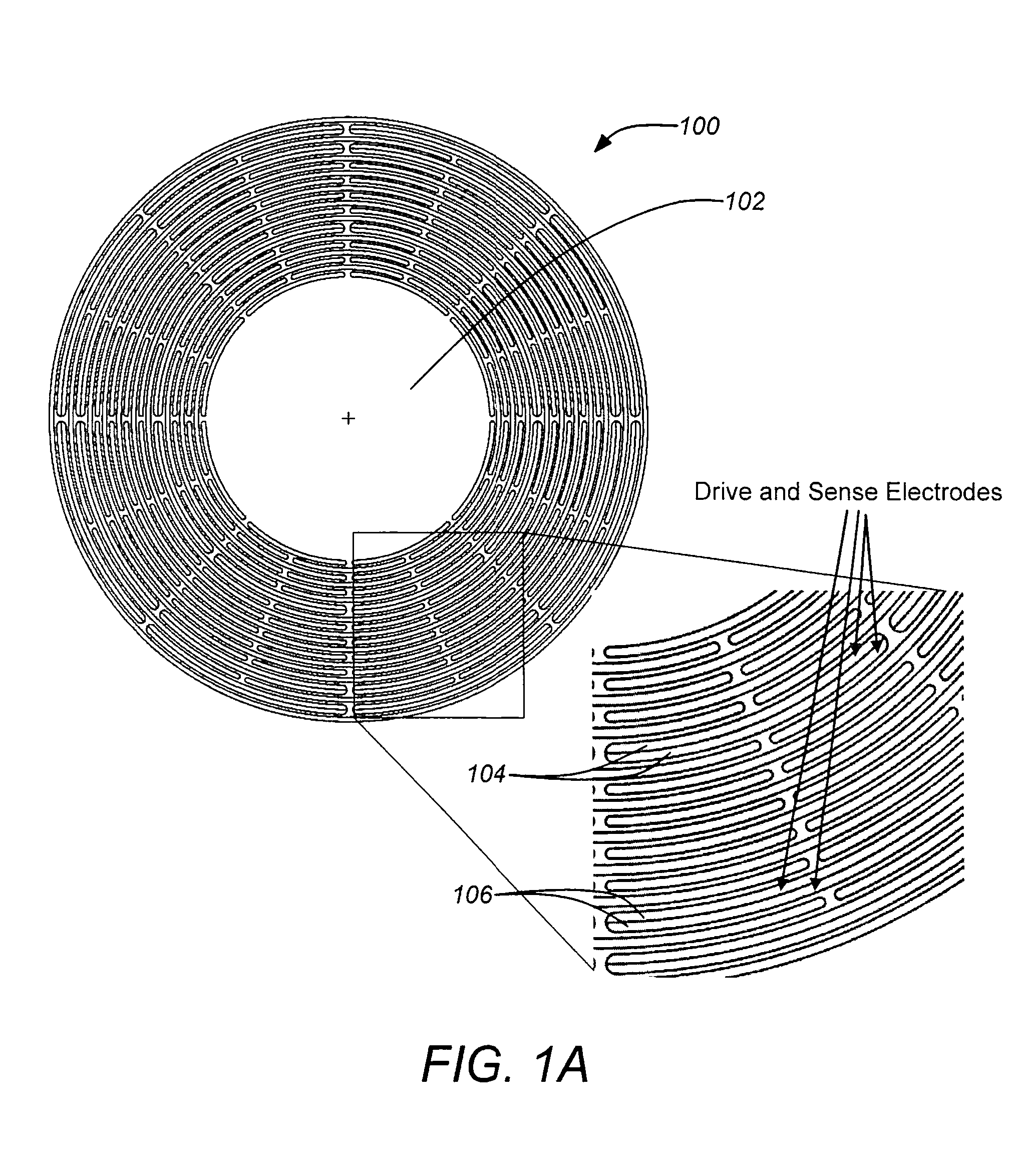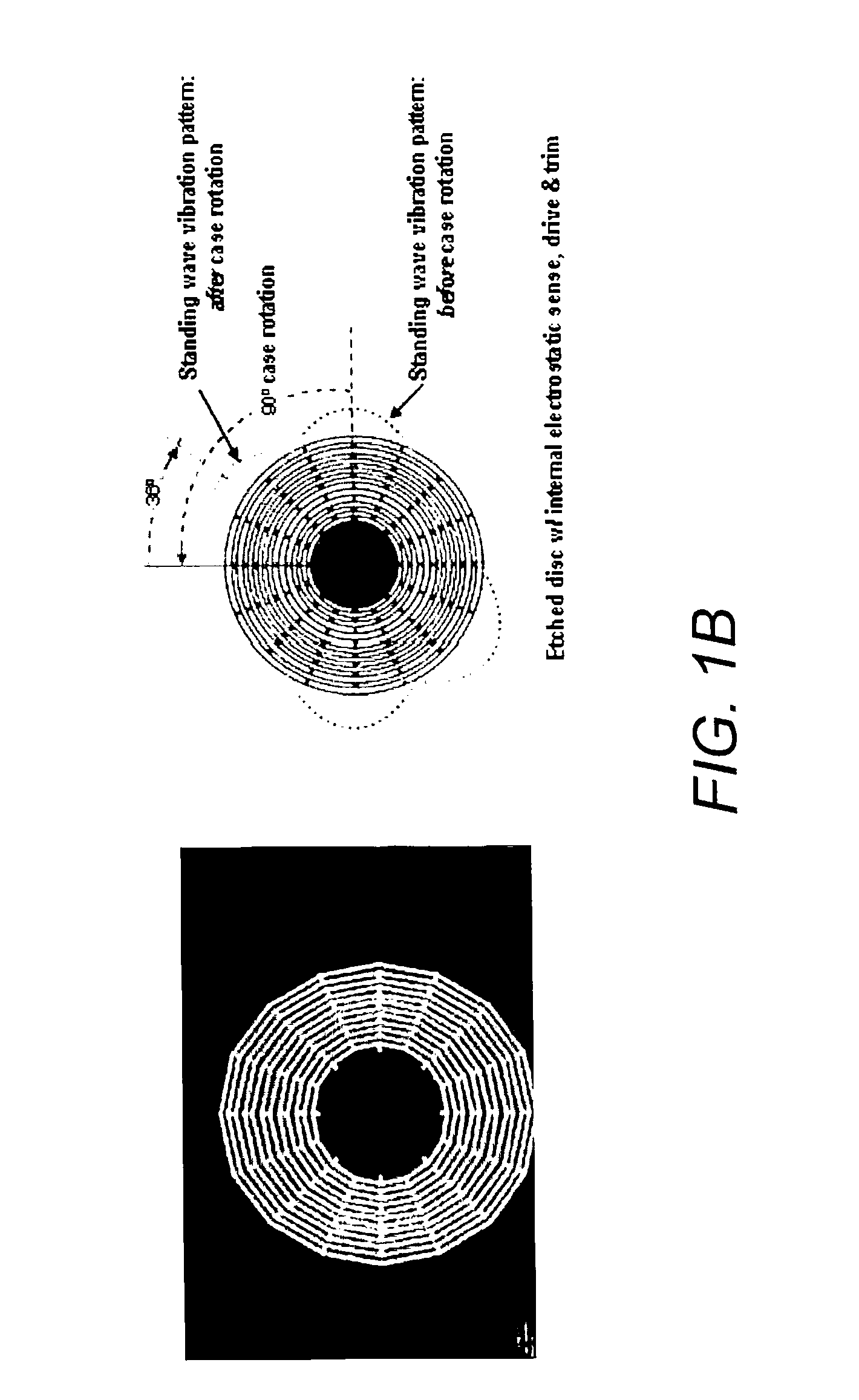Disc resonator gyroscopes
a gyroscope and disc resonator technology, applied in the field of gyroscopes, can solve the problems of sensing errors and drift, large and heavy, and old mechanical gyroscopes were very heavy mechanisms, and achieve low thermoelastic damping, low anchor loss, and high q resonator material
- Summary
- Abstract
- Description
- Claims
- Application Information
AI Technical Summary
Benefits of technology
Problems solved by technology
Method used
Image
Examples
Embodiment Construction
[0048]In the following description of the preferred embodiment, reference is made to the accompanying drawings which form a part hereof, and in which is shown by way of illustration a specific embodiment in which the invention may be practiced. It is to be understood that other embodiments may be utilized and structural changes may be made without departing from the scope of the present invention.
[0049]1. Overview
[0050]One significant factor in the material selection for a resonator (and overall gyroscope) is the impact of the material on energy loss for the device. The fundamental energy loss mechanism in a resonating solid has been previously proposed by Zener in 1948 to be thermalelastic damping.
[0051]QTE=Qo[1+(ωτ)22(ωτ)2](1)Qo=2CvEα2To(2)
where, Cv=specific heat capacity, E=Young's modulus, α=coefficient of thermal expansion, To=nominal resonator temperature, τ=thermal relaxation time, and ω=2πx(frequency of oscillation). In equation (1), Q0 is material and temperatur...
PUM
 Login to View More
Login to View More Abstract
Description
Claims
Application Information
 Login to View More
Login to View More - R&D
- Intellectual Property
- Life Sciences
- Materials
- Tech Scout
- Unparalleled Data Quality
- Higher Quality Content
- 60% Fewer Hallucinations
Browse by: Latest US Patents, China's latest patents, Technical Efficacy Thesaurus, Application Domain, Technology Topic, Popular Technical Reports.
© 2025 PatSnap. All rights reserved.Legal|Privacy policy|Modern Slavery Act Transparency Statement|Sitemap|About US| Contact US: help@patsnap.com



